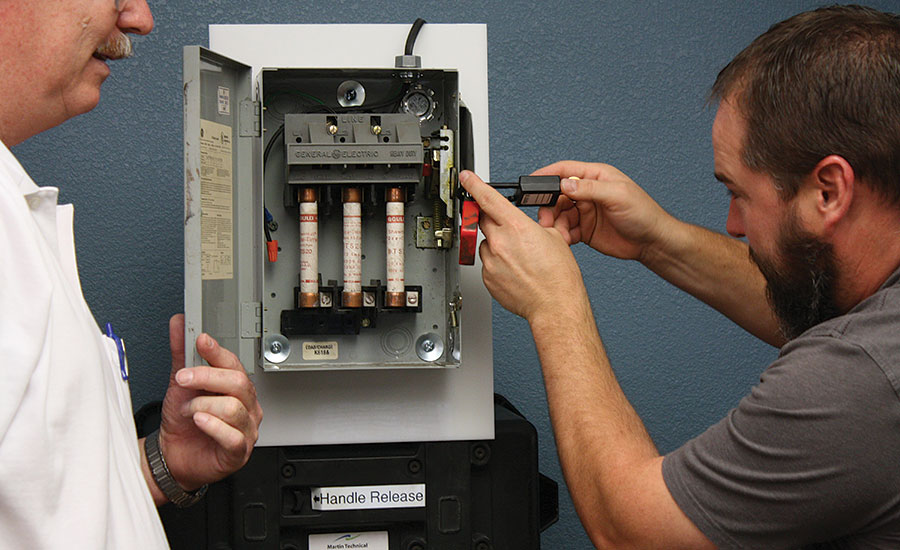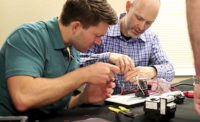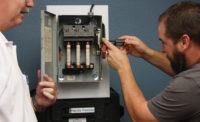When you can’t see, smell or hear hazards
Here’s how to improve your arc flash & electrical safety training

Working on electrical equipment exposes a worker to electric shock and arc flash hazards. Unlike many safety concerns, these hazards simply can’t be eliminated or avoided as working on or around energized equipment is often required for some tasks, such as using a meter to test for voltage or rack a breaker. Training, therefore, is perhaps the most essential part of an electrical safety program, but arc flash and electrical safety training comes in many formats and lengths, so it’s essential that the training is effective for electrical Qualified Persons (those who work on or around energized equipment ≥ 50v).
Recognizing the hazards
The first part of the electrical safety process is identifying the hazards and the associated risk, but this can be tricky because you can’t always see, smell or hear the specific hazards. Hazard recognition training comes in the form of understanding the fundamentals of electrical equipment and distribution systems, and the conditions or situations where that would expose a worker to a higher risk. Equipment malfunctions, breaker tripping, improper installations, buzzing and related information normal or abnormal operation of equipment should be applied to recognizing the hazards, with information on how to address the specific hazard.
Hands-on demonstrations & interaction
Electrical training requires lecture to understand the codes, standards and theory, but the necessary hands-on training in frequently overlooked. A common gap seen in the industry is workers who have received electrical safety training, but stop short of using their training because they have either a) not be shown how to apply it; or b) are afraid to apply if the first time on live equipment.
Activities such as the proper way to inspect and test gloves before use, proper selection and testing of meters before use, proper methods of operating disconnects should be part of the training. For arc flash and shock hazard, workers should be required to read labels, select the PPE, put up boundaries as part of their demonstration.
Special conditions and equipment specific training
Electrical safety training is not a one-size-fits-all program, and often the safety training needs to expand to special conditions, process or equipment at the plant. High voltage, classified/hazardous locations, alternative energy, and battery (or DC) electrical safety are common areas of electrical safety that require special attention, but are frequently missed in training programs.
In addition, workers are often confronted with specific equipment design or installations that present unique challenges for them, so the instructor should have the skill sets to help workers understand the best work safety approach to these conditions and equipment.
Format, length & frequency
Training can come in many forms including on-the-job (OTJ), classroom setting, online or videos, so it’s important to select the right type of training for the person and application. Awareness training can be conducted online and without an instructor; however, training for Qualified Persons must be done in the classroom, on-the-job, or a combination of the two according to NFPA 70E® and OSHA.
The frequency and length of the training is determined by the employer, according to OSHA. NFPA 70E® states that training frequency should be done in intervals not to exceed three years. As both NFPA 70E® and the National Electrical Code are published in three-year intervals, it’s important to keep workers up to date of the changes in the code and standards.
The length of training is not defined be either OSHA or NFPA 70E® as the training needs to be done to the risks, hazards and knowledge at each location. As a general rule however, a two-day training class is a standard length. A three-day class might be required for going more in depth to specific equipment, and a one-day class might suffice as an annual refresher for those who are deeply familiar with electrical safety.
Including information on all codes and options
Some electrical safety training focus on OSHA while others focus on NFPA 70E, but what is needed in the interaction of these two codes, as well implementation of other codes or standards such as NEC, ANSI or NFPA 70E®, and your company electrical safety written policy.
OSHA alone is a poor guide as it tells you “what” to do, but not “how” to do it.
NFPA 70E® is the standard for electrical safety in the workplace and provides a lot of the “how,” but not all of it, leaving it up to the employer. Your electrical safety written policy may extend beyond and code or standard, or include specific procedures that the workers must follow.
A good electrical safety training program can give guidance on options on how to comply with both OSHA, NFPA 70E®, and your own internal policy which at times requires referencing other standards, and in some cases there is no standard to reference, but only unpublished industry best practices. Make sure your training program includes more than a narrow view and provides application and solutions for the requirements.
Looking for a reprint of this article?
From high-res PDFs to custom plaques, order your copy today!






